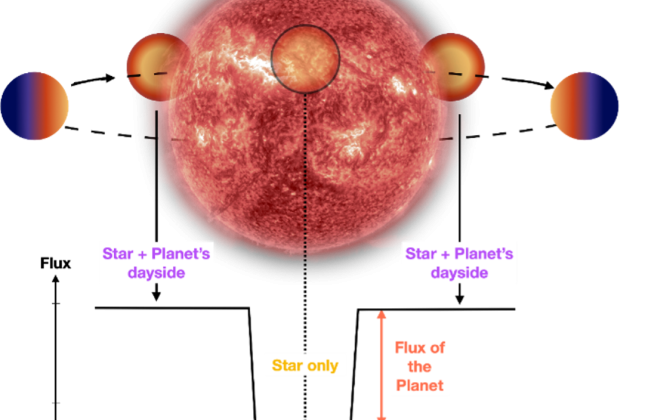In the search for extraterrestrial life, the planetary system around the star TRAPPIST-1 is one of the most promising places to find a habitable environment. It consists of seven rocky planets, three of which at a distance from the parent star where the temperature is around that of liquid water. An international team of astronomers, including Michiel Min (SRON), has now used the James Webb Space Telescope to study the planet TRAPPIST-1b, the closest one to the star.
The team measured the infrared radiation emitted by TRAPPIST-1b at a specific infrared wavelength of 12.8 microns. They received a much weaker signal than during previous observations at an infrared wavelength of 15 microns. This distinction rules out a simple dark sphere without atmosphere, which would emit much more radiation than the new measurements show.
A better fit with the measurements is an atmosphere-free planet with volcanic rock full of minerals. Although a more interesting scenario is also possible: TRAPPIST-1b has a thick atmosphere filled with CO2 and a haze of carbon particles. That haze absorbs a lot of starlight in the upper layers of the atmosphere, making those hotter than the lower layers. The same thing happens in Earth's stratosphere. Our telescopes capture the light from this hot upper layer, including the corresponding fingerprint in the spectrum. Which indeed contains more radiation at 15 microns than at 12.8 microns.
‘This scenario is quite common in the Solar System,’ says Michiel Min (SRON). 'Perhaps the most similar example being the hazy atmosphere of Saturn's moon Titan. But we expect the chemistry in the atmosphere of TRAPPIST-1b to be very different from anything we know from our Solar System. This star is cooler and more active, with much more UV radiation. That makes this fascinating.'
The team came across this emission spectrum because the fickle nature of TRAPPIST-1 is unsuitable for conventional absorption measurements. In most cases, astronomers wait for a planet to pass in front of its parent star and starlight seeps through its atmosphere. The substances present in that atmosphere then leave a fingerprint. In this case, astronomers had to wait until the planet almost disappears behind the star, thus showing its full day side, like a full moon.
